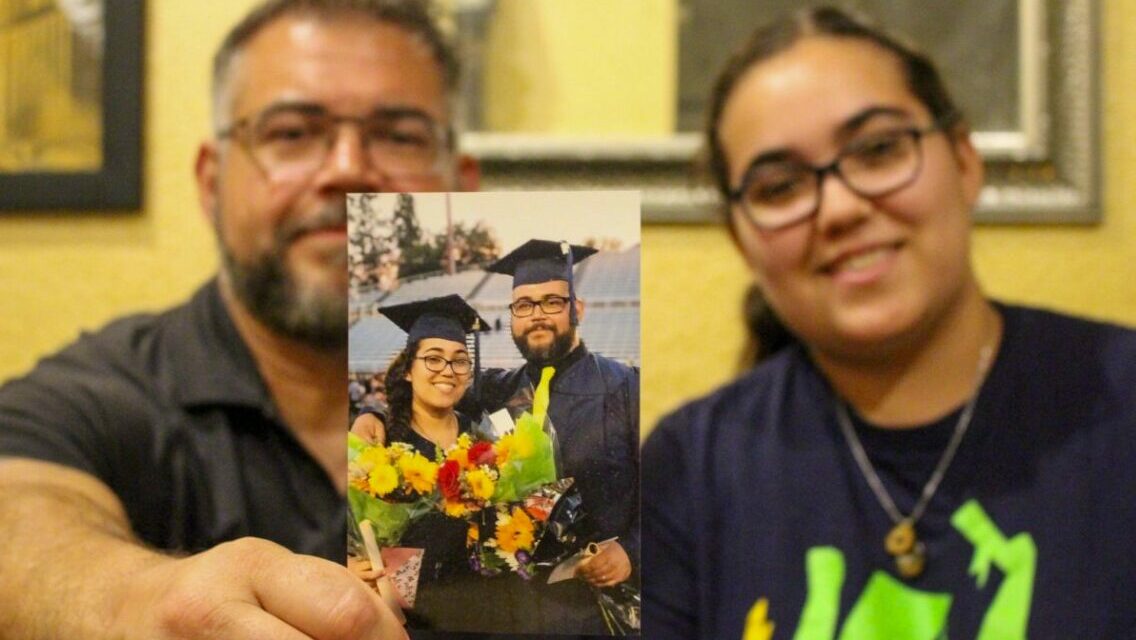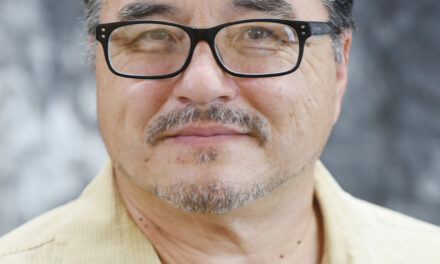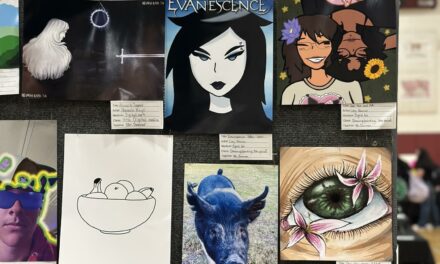Katie Escobar and her sister, brother, parents, boyfriend and four dogs squeezed around a dark wooden dining room table on a recent Sunday night.
Conversation flowed with weekly updates, favorite TV shows and an almost constant banter between the family members. The Escobars certainly don’t agree on everything, but they all value the same thing: education.
Between the seven members of the family, they’ve obtained 10 college degrees.
Katie, 23, is currently in a master’s degree program studying education, but she earned her first degree much earlier. The same year she graduated from El Capitan High School, she also obtained an associate of arts degree from Merced College in social and behavioral science. An associate of arts degree is made up of 60 college credits, usually the equivalent of two years in full-time college.
Katie was hooked upon taking her first college class.
“I was really interested in seeing what else I could take, and from each year, I just started taking more,” she said.
But Katie is far from alone in getting a degree so young. More and more K-12 students in the San Joaquin Valley are either taking college courses or earning an associate of arts, otherwise known as an “AA” degree. Research shows such academic strides in high school can help students like Katie finish college and accelerate their careers.
According to data from California Community Colleges, the educational system representing all community colleges in the state, from 2018 to 2020 the number of Valley teenagers who obtained an associate degree nearly doubled. Since then, around 1,700 students 19 or younger have earned these degrees each year.
Dual enrollment, a phrase used by educators to define high school students who take college classes, has grown too.
That’s particularly true at community colleges, and the Valley has led the shift. Last fall, 31% of students enrolled at community colleges in the Central Valley were simultaneously enrolled in grades K-12 — the highest of any region in the state.
Dual enrollment in the Central Valley is higher than in any of the other regions in the state, including the San Francisco Bay Area, Los Angeles/Orange County and San Diego County.
Christian told the nonprofit news site Ed Source one of her main goals in becoming chancellor was to expand dual enrollment beyond the south Valley.
Reaching that goal won’t come without challenges, considering a recent study done by the institute found college completion in the region is the lowest in the state.
Rodriguez said millions of dollars in state funding have gone to support dual enrollment in the Valley. In a recent panel hosted by the institute, Valley education leaders said they continue to work together to expand higher education access.
Educators statewide increased the push for dual enrollment in 2016, with a law that allowed community colleges to partner with local school districts to provide initiatives like the College and Career Access Pathways program. Under this program, tuition and textbooks are free for high school students who enroll part-time into college classes.
Indeed, affordability “is one of the top concerns on people’s minds,” Rodriguez said.
The bill passed in large part thanks to various studies that show high schoolers who take classes for college credit have a higher chance of continuing college after they graduate.




